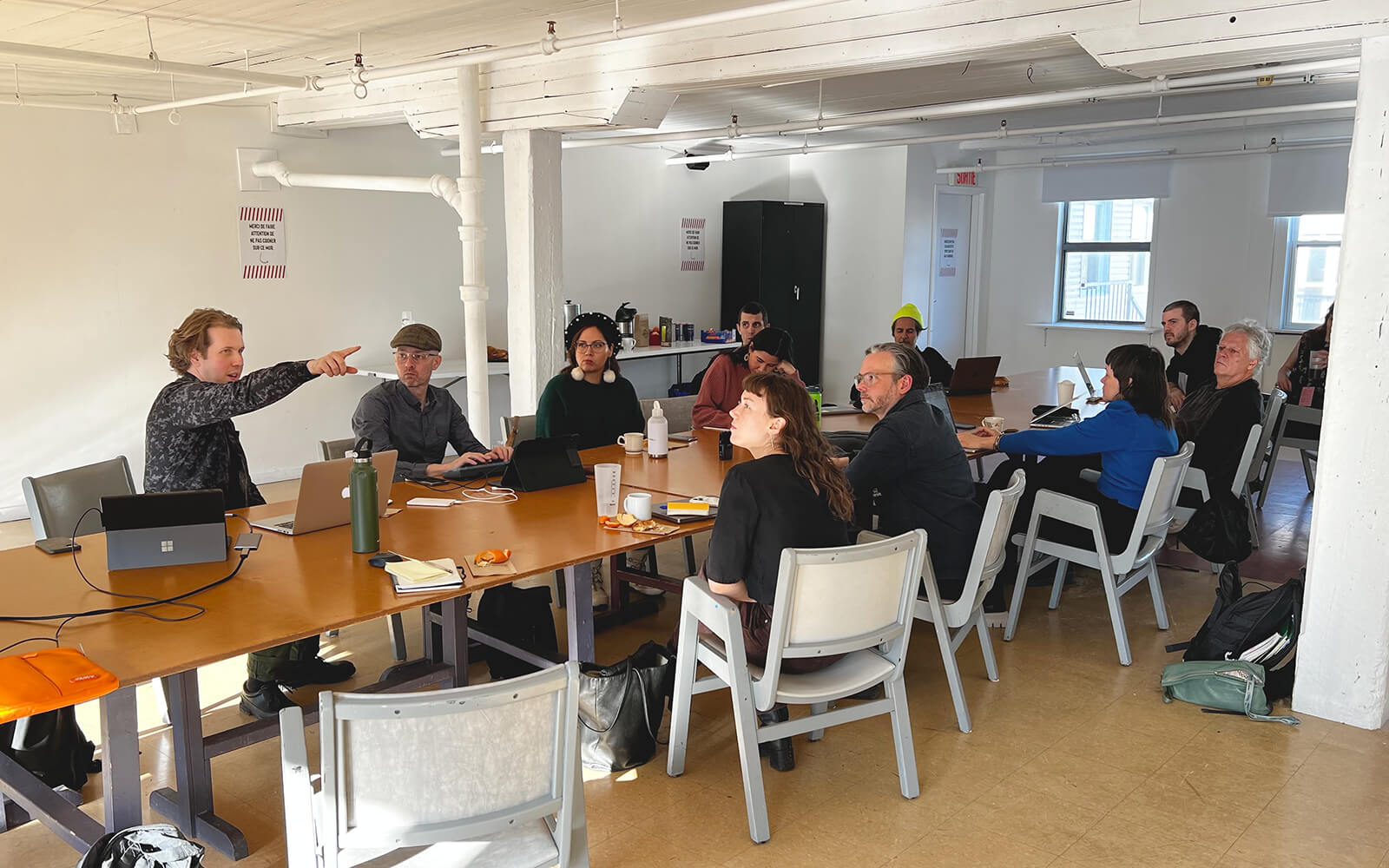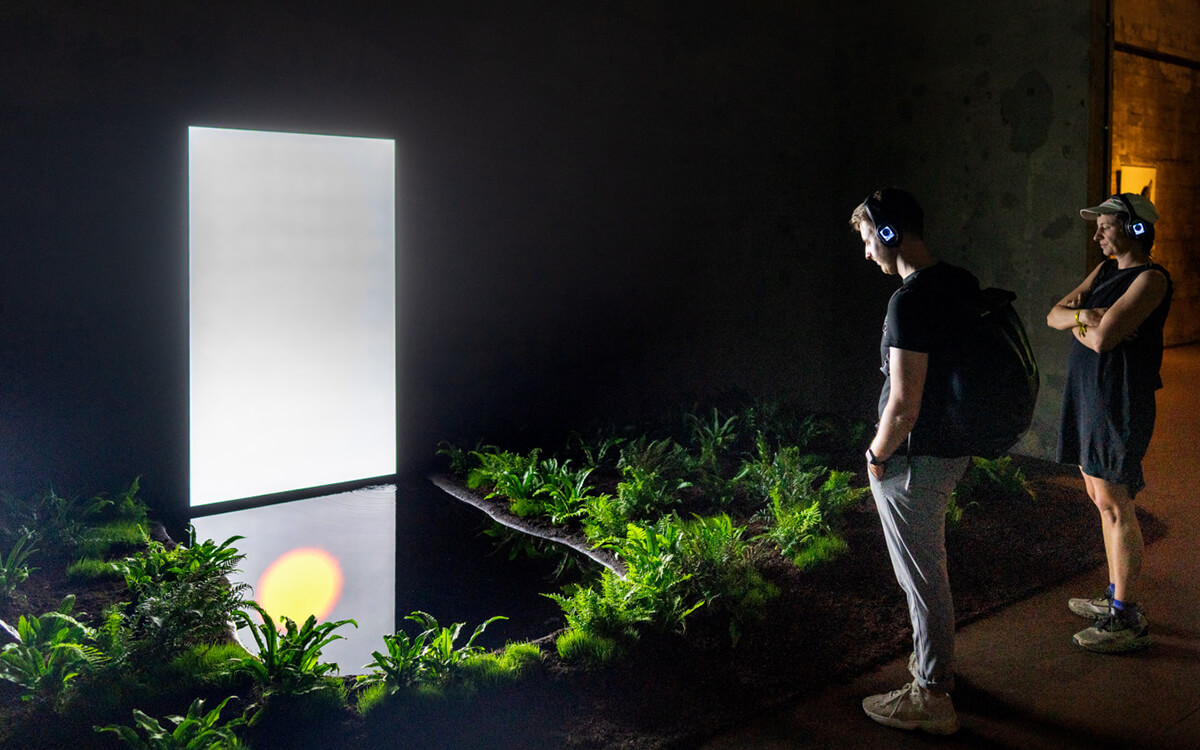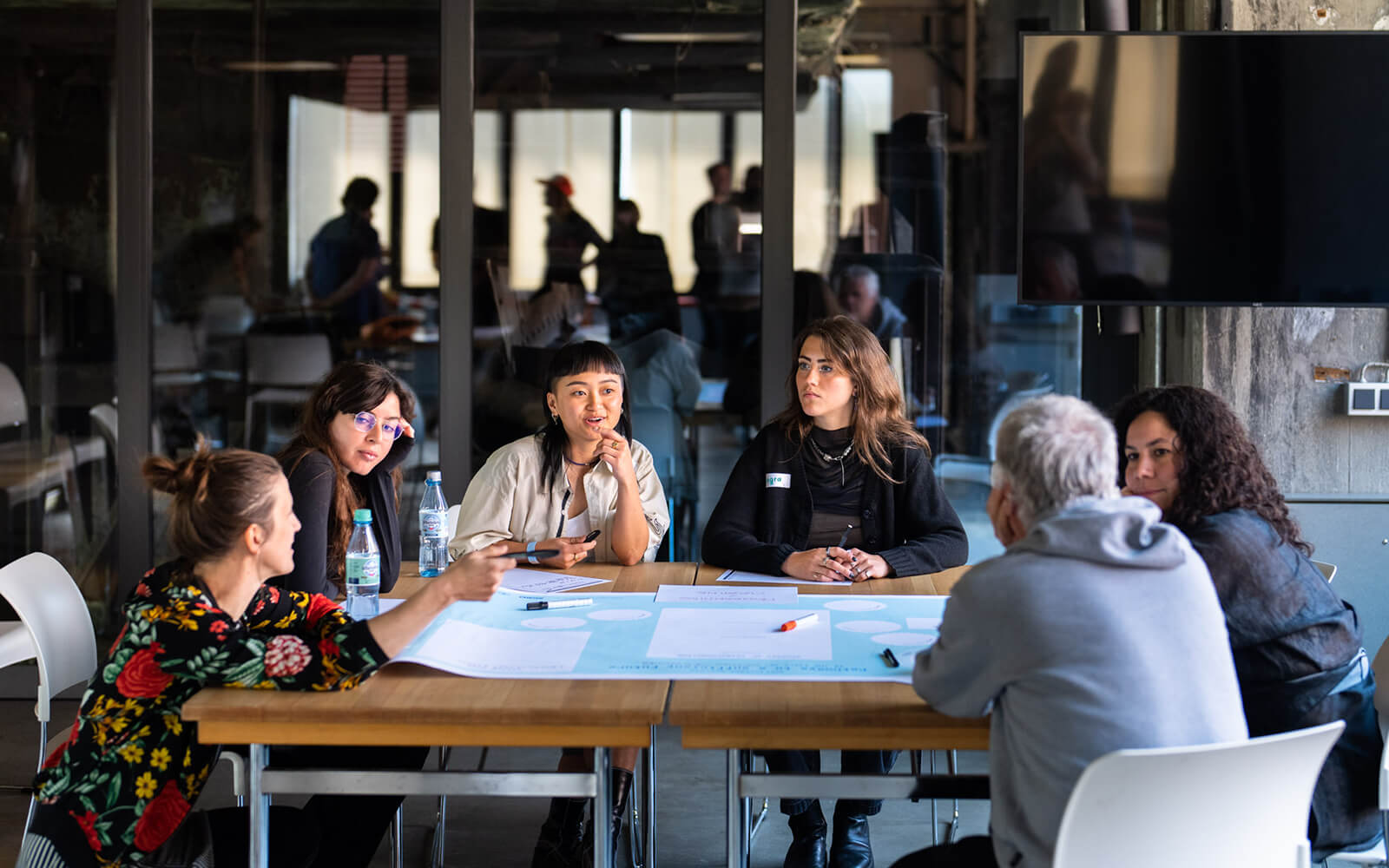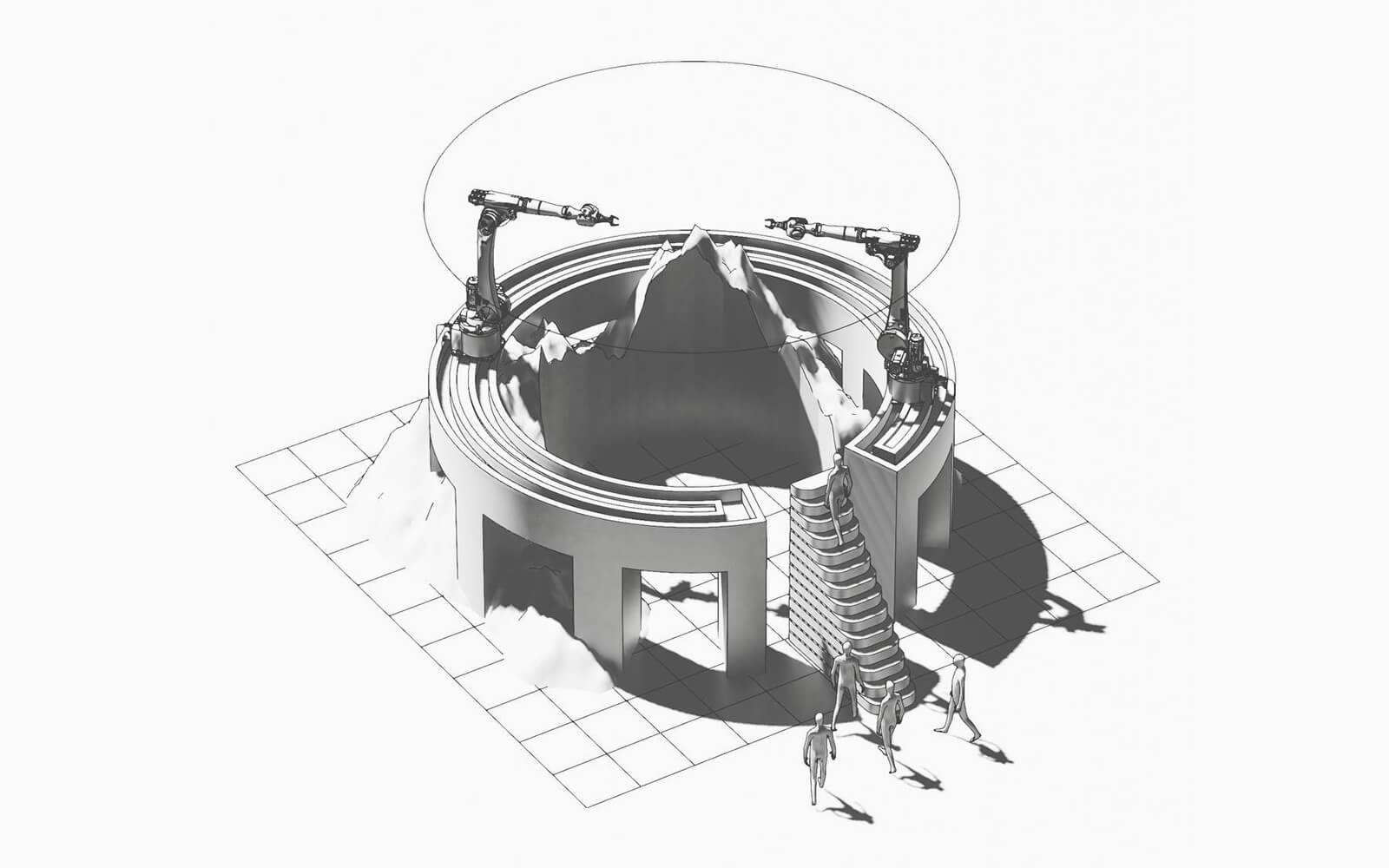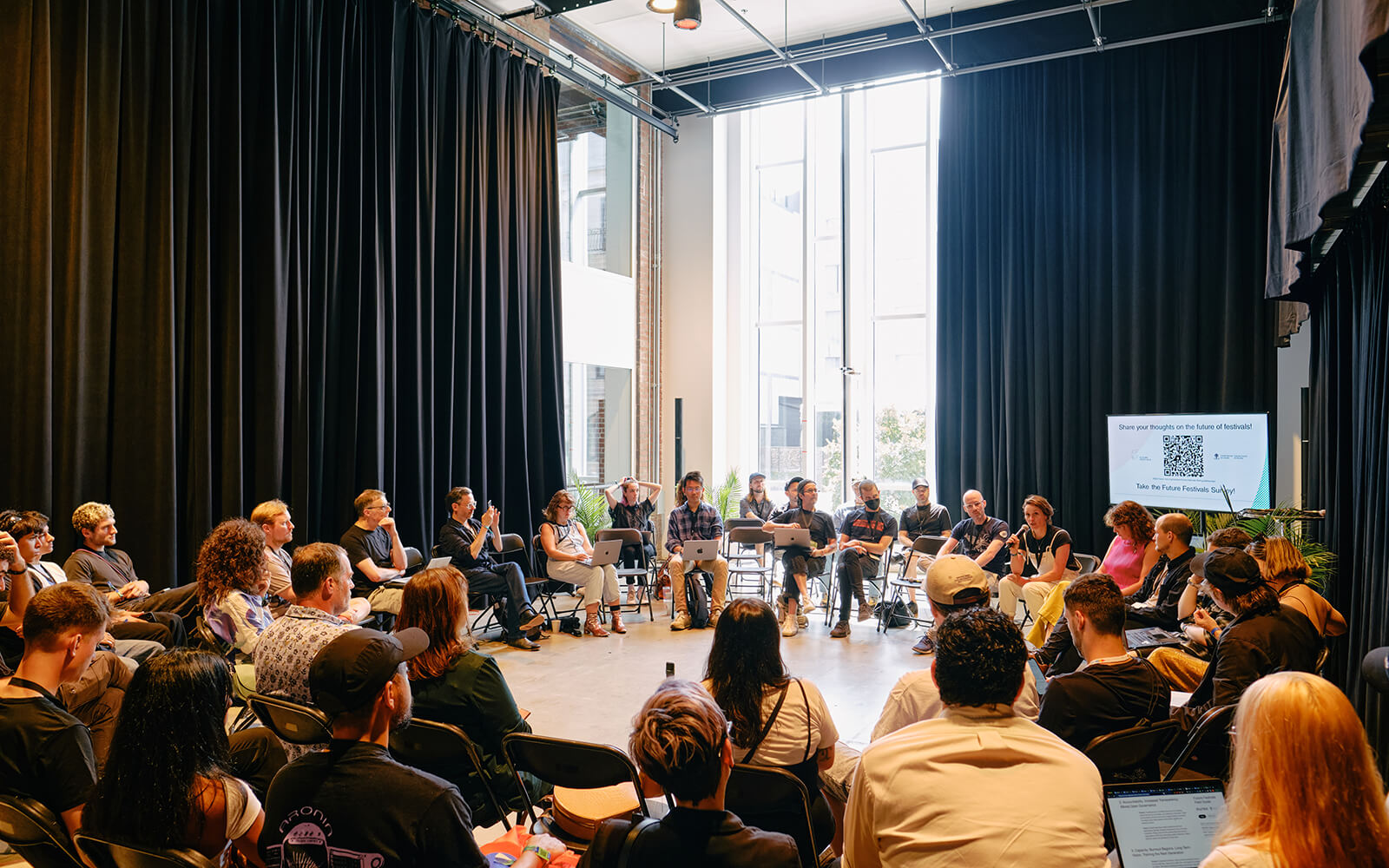Future Festivals Field Guide: Cultivating Sustainable Festival Futures
Speculative architect and filmmaker Liam Young imagines a radical urban future that heals nature while, quite literally, bringing humanity together
A city that is home to 10 billion people—the entire human population projected into one urban utopia. This is the world that LA-based speculative architect and filmmaker Liam Young invited the audience to imagine. Narrating scenes from his CGI short, Planet City (2020), Young describes energy infrastructures snaking their way through the very fabric of the city’s bioregions and the power of a billion solar panels pumping water to high altitude holding lakes alive with fish and algae. “Picture yourself fishing in the city’s battery lakes, following the seasons up through the towers to collect honey with beekeepers, or falling in love amongst the pink algae blooms before harvest,” Young said. Set in the year 2050, the film is based on a proposal by late American biologist Edward O. Wilson who, in his book Half-Earth (2016), advocated for designating half of the Earth’s surface to a natural reserve in order to stave off mass extinction. Young’s film takes that idea to its extreme. “If we were to reorganize the world at the intensity of the densest cities, then Planet City could occupy as little as 0.02% of Earth,” he explains. As the invisible lines that once divided us fade beneath a planet of trees, shared cultural practices around care, belonging, and recreation may begin to thrive.
Young is famous for his fictional worlds that manifest in films, artifacts, and immersive installations. “Rather than proposals, they’re provocations or thought experiments that provide a challenging image, an unsettling image of a possible tomorrow,” he explains. “They can be both cautionary tales or roadmaps to an aspirational future.” Although wildly speculative, Young’s imaginaries are based on real science, real technologies, and real people, he insists. Only then can we project ourselves into this future. Monumental infrastructures like solar farms and wind energy networks, for example, are evidence that we’ve already urbanized the planet and that many of the technologies required to regenerate our climate are here. “In Planet City, we just remove the political roadblocks or the lack of cultural investment that currently holds them back.”
“If we mapped all the world’s festivals onto a calendar, Planet City would be a continual festival procession, dancing across a 365-day loop. Each day, it would interact and intersect with another carnival or ecology, endlessly cycling through new colours and costumes.”
Take-away: The climate crisis is also a crisis of imagination. It’s our long history of extractive ideologies and belief systems that prevent us from re-organizing society around ethics, values, and environmental sustainability. Young’s vision of a Planet City may be eco-fiction, but its powerful vision speaks to the transformational change we need.
Sustainability expert Mikellena Nettos drops inconvenient truths about the environmental footprint of the cultural sector and urges festival makers to do better.
When it comes to climate finger-pointing, the cultural sector tends to get off easy. What possible difference could a few festivals make to a planet wrecked by major corporations? Canadian Master of Sustainability and Youth Engagement Coordinator of The Climate Reality Project Mikellena Nettos brought sobering receipts: Every year, UK music festivals produce about 23,500 tonnes of waste, much of it from single-use plastics like cups and cutlery. Large festivals like MUTEK consume over 30,000 megawatts of power—the annual usage of ~3,000 Canadian households—during a single weekend, often generated from dirty diesel generators. Culture’s biggest climate culprit is—surprise—international travel, which can easily make up 80% of a festival’s carbon footprint. But there are also immediate impacts on local eco-systems that are just as problematic and even harder to track. Depending on a festival’s bioregion—Nettos explained the different risks to forests, deserts, islands, and wetlands—land degradation, water pollution, and wildlife disruption can cause serious and often irreparable damage. The big question: Can we gather in celebration of art and music responsibly and without doing harm?
There’s indeed a lot that festival makers can do, Nettos told an anxious audience. “A new wave of eco-friendly festivals have emerged that promote sustainable practices and direct a portion of their revenue to environmental projects.” Hillside Festival in Ontario’s Guelph Lake Conservation Area, for example, is one of the most environmentally conscious music festivals in Canada. Over its 40-year history, the organizers have cultivated a wide range of sustainable practices that include solar-powered facilities, green roofs, a no-plastics policy, and alternative modes of transportation like bicycles and shuttle buses. “Despite financial challenges, the festival’s dedication to sustainability remains unwavering,” Nettos explained, praising Hillside for “setting a powerful example for other initiatives not only reduce the environmental impact, but also educate attendees and inspire other festivals to adopt similar green practices.”
“A new wave of eco-friendly festivals have emerged. They promote sustainable practices and direct a portion of their revenue to environmental projects.”
Take-away: There are no festival futures without climate and environmental justice. As governments and communities are under increasing pressure from extreme weather—destroyed infrastructure, failing agriculture—the already precarious cultural sector may face an existential threat. If festivals, as Drew Hemment argues, are truly sites of societal innovation, then festival makers must lead on sustainability.
FutureFantastic’s Kamya Ramachandran highlights the importance of eco-critical festivals for India and the transformative power of radical optimism.
FutureFantastic started as a social experiment, curator Kamya Ramachandran said of the origins of Bangalore’s AI Art Festival for Climate Change. In 2009, local artist Archana Prasad and technologist Freeman Murray set up the Jaaga Creative Common Ground, a social sculpture and community hub made from pallet racks that soon after sparked a residency and and a tech-art program. Today, Jaaga is a thriving arts organisation that serves Bangalore’s creator community with a wide range of activities to learn and connect. “The idea is to use technology to promote Indian aesthetics and Indian cultural heritage that we feel is often underrepresented in this space.” In 2021, Archana Prasad and Jaaga Creative Director Kamya Ramachandran expanded on Jaaga’s mandate with BeFantastic, a tech-art platform with a more international scope that through collaboration with other festivals and arts organisations brought FutureFantastic into the world.
Bangalore is a city of 14 million and suffers from a bad reputation, Ramachandran said about what motivated the festival. “All we ever hear in the news are horror stories about crumbling infrastructure, garbage in the streets, the lack of water and sewage. It’s dystopian.” Ramachandran and her BeFantastic team decided to intervene. “As artists and technologists we wanted to imagine a different future for ourselves, one that is radically optimistic.” In March of 2023, the first edition of FutureFantastic AI Art Festival for Climate Change opened its doors, showcasing 25 eco-critical works alongside panel discussions, performances, a film program, and workshops. Nearly 5,000 people showed up, eager to learn about AI and climate change—and to get their hands dirty. “One art project built a garbage data set via the meticulous documentation of every piece of waste that left the households of participants in three different cities over three months,” Ramachandran explained. “The data fed an interactive garbage waterfall installation to call attention to the waste problem on the ground.”
As far as green festival practices are concerned, FutureFantastic leads by example: “We experiment with zero waste policies, vegan food markets, and energy audits of all the festival facilities,” Ramachandran noted. “This helps us understand the system, understand how far we can go and how far we still need to go. To me, festivals are great testing grounds.”
“For me, it’s very important that a festival like FutureFantastic exists in India, a region that is more vulnerable to the impacts of climate change. The name is inspired by hope and the amazing work we have to offer the world.”
Take-away: The importance of empowering communities in regions most affected by climate change cannot be overstated. FutureFantastic is a great example of how festivals can engage local audiences creatively, raise awareness around environmental issues, and use tech to inspire confidence and action.
Future Festivals Field Guide
Future Festivals Field GuideExplore more of "Future Festivals Field Guide:"
→ HOLO.mg/stream/
→ HOLO.mg/future-festivals-field-guide/
Alexander Scholz
Alex is a Berlin-based writer, artistic director, and cultural worker. As the founder and creative director of HOLO, he helps produce and disseminate knowledge on disciplinary interstices, artistic research, and cultural transformations in the digital age. Over the years, he curated exhibitions, conferences, and educational programmes for organizations and festivals including A.C.C. (KR), Mapping (CH), MUTEK (CA), and NODE Forum for Digital Arts (DE).



